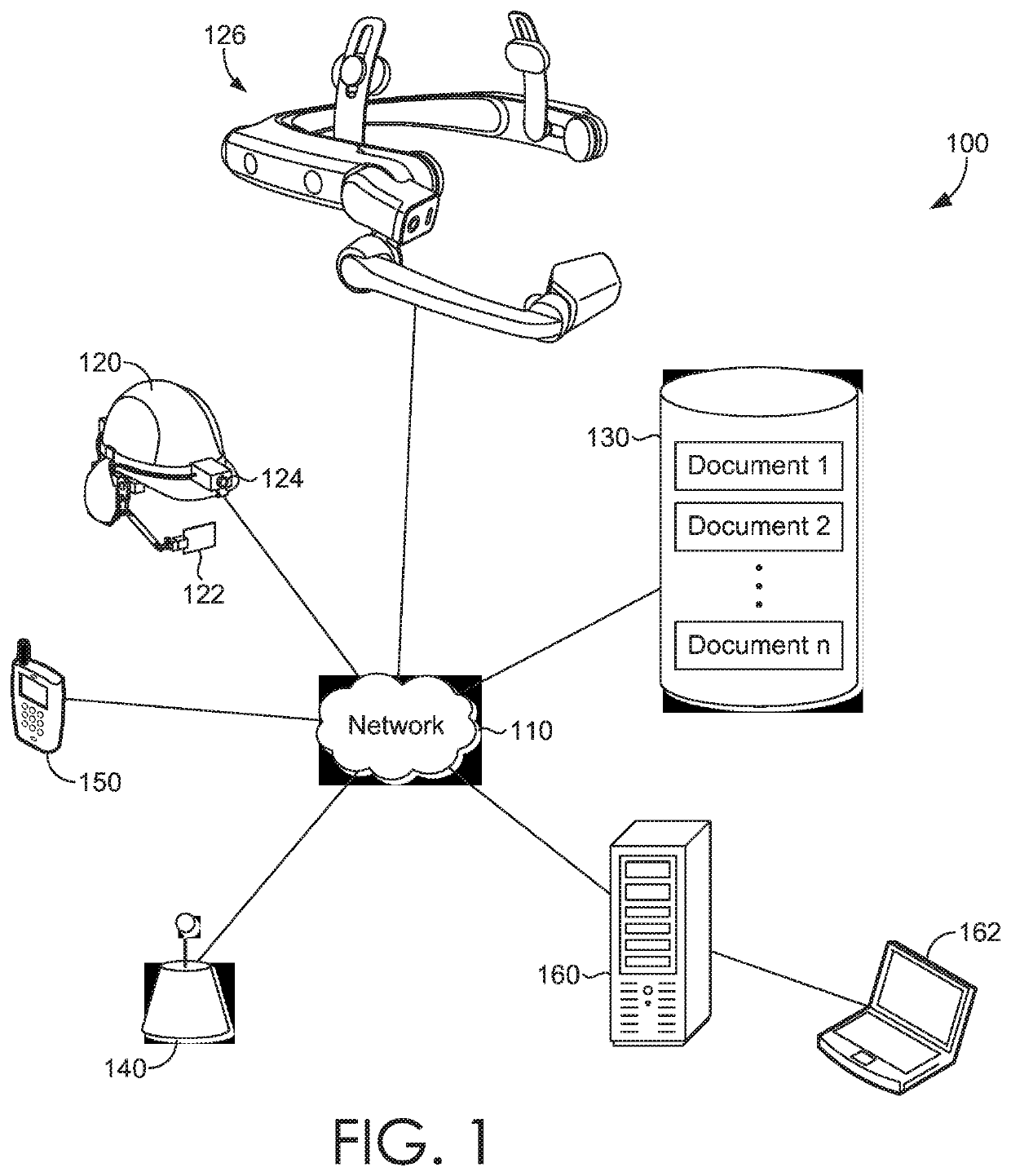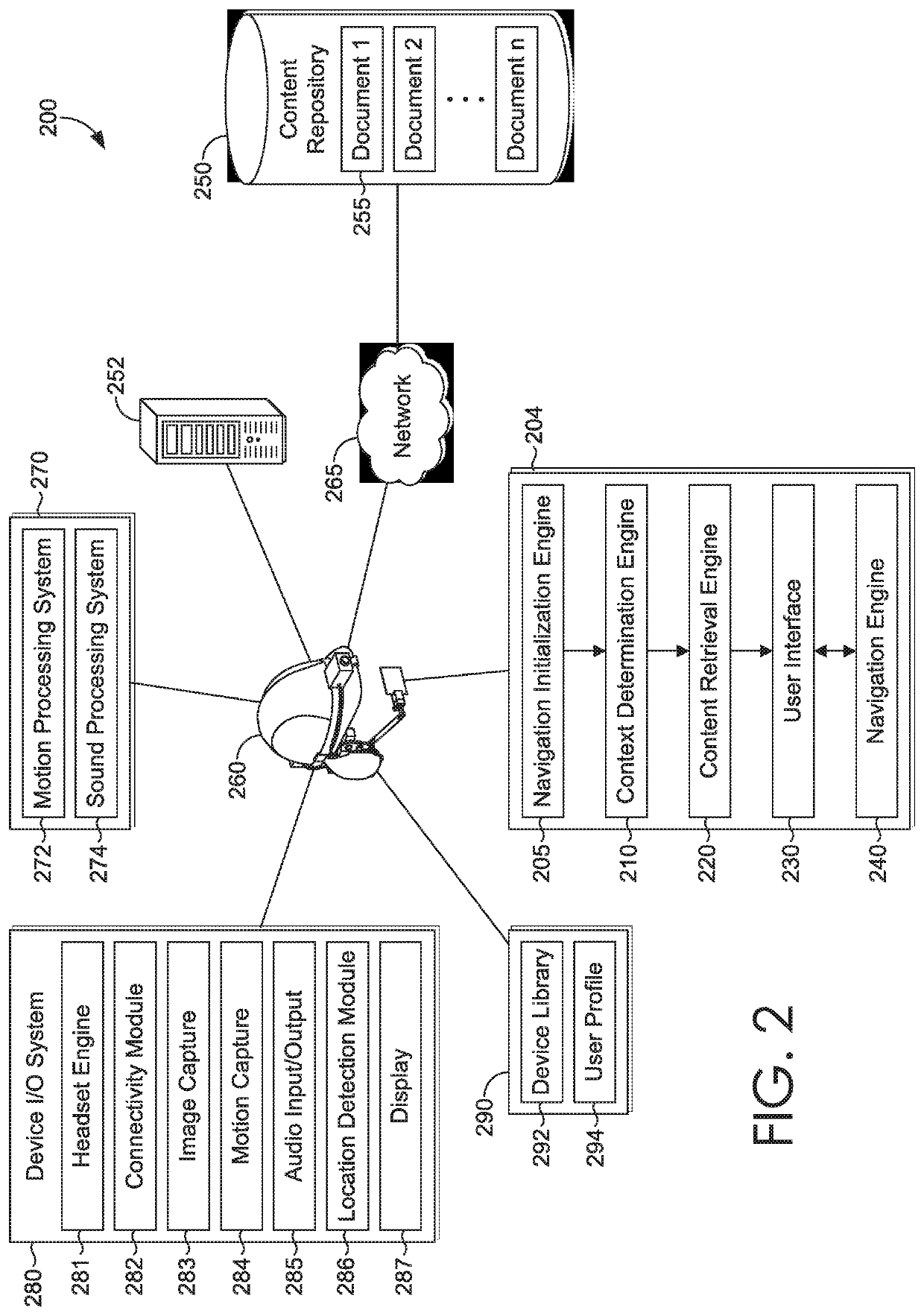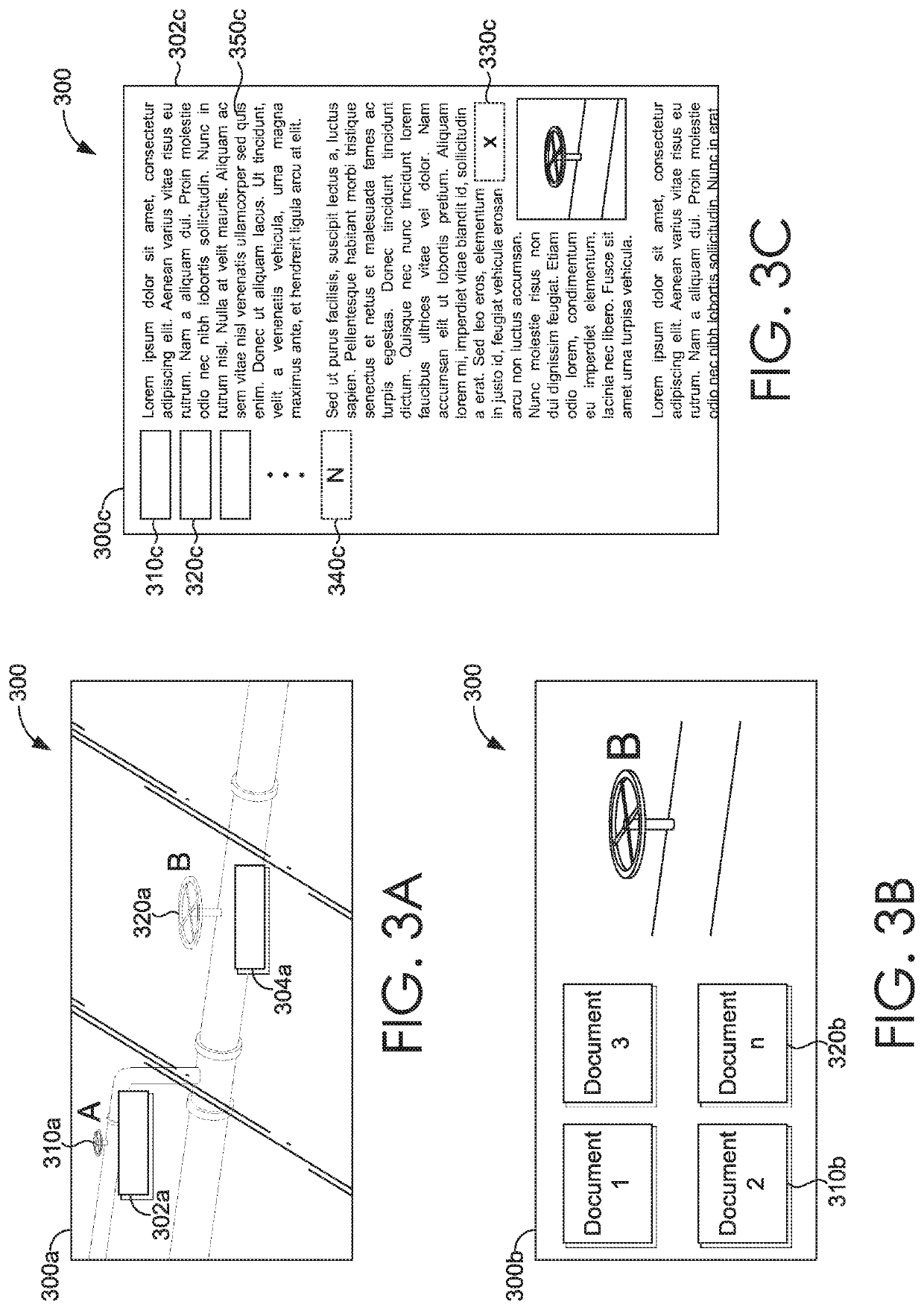Hands-free contextually aware object interaction for wearable display
a technology of contextual awareness and object interaction, applied in the field of hand-free contextual awareness object interaction for wearable display, can solve the problems of limiting efficiency and effectiveness, ineffective use of time, and inability to find required content through manual navigation or touch-based systems, and achieve the effect of effective and efficient navigation through conten
- Summary
- Abstract
- Description
- Claims
- Application Information
AI Technical Summary
Benefits of technology
Problems solved by technology
Method used
Image
Examples
Embodiment Construction
[0024]The ability to easily and efficiently access and navigate relevant content through the use of a wearable device is an important aspect for user workflow and operation in particular scenarios, for example, in industrial applications where a user needs to navigate a potentially large volume of content quickly and while maintaining interaction with the technology while concurrently engaged in other tasks. Further, the ability to utilize a wearable device in a hands-free context enables a user to effectively implement workflow processes and procedures as well as to interact with any number of devices, including both non-interactive devices (e.g. non-human-machine-interface (HMI devices) and devices that include a human-machine interface (e.g. a device having a touch-screen display) detected by a wearable device which can be required to complete user tasks. Augmented reality dashboards that can implement what can be understood as personal control rooms for a user enable robust func...
PUM
 Login to View More
Login to View More Abstract
Description
Claims
Application Information
 Login to View More
Login to View More - R&D
- Intellectual Property
- Life Sciences
- Materials
- Tech Scout
- Unparalleled Data Quality
- Higher Quality Content
- 60% Fewer Hallucinations
Browse by: Latest US Patents, China's latest patents, Technical Efficacy Thesaurus, Application Domain, Technology Topic, Popular Technical Reports.
© 2025 PatSnap. All rights reserved.Legal|Privacy policy|Modern Slavery Act Transparency Statement|Sitemap|About US| Contact US: help@patsnap.com



